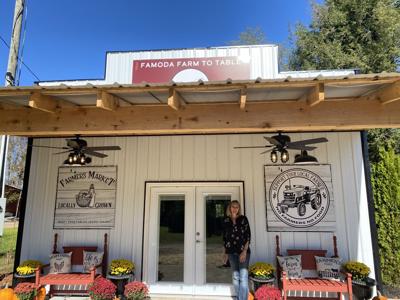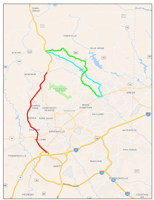GREENVILLE — Zoning has long been a dirty word to thousands of Greenville County residents who live in rural parts of the county north and south of the metropolitan core. It meant control, and it meant the county telling landowners what they could and couldn’t do on their property.
But longtime Greenville County Councilman Joe Dill now expects a flood of residents in his northern Greenville County district to ask to be zoned as a hedge against encroaching development.
What changed?
Greenville County Council unanimously approved a new zoning classification during its Nov. 16 meeting, creating agricultural zoning in the county for the first time.
Those who live on or near farms in both zoned and unzoned parts of the county can request to zone their land for agricultural use. It allows them to live there, and to build a house on every 5 acres if desired, but it would limit the number of homes that could be built on what farmers and neighbors hope will remain some of the county’s undeveloped farms, pastures and forests.
“They didn’t want the government telling them what to do, but this is their way of telling the government, ‘You do what I want you to do,’” Dill said after the final vote.
Dill said he expects residents who have been opposed to zoning in the past “all over this county” to seek it now that there is a zoning classification that fits their lifestyle and needs. Others, he said, may seek to change existing zoning to ag zoning. Before, the best choice for some farms that were in zoned parts of the county was to seek rural residential zoning, but that had limits on some agricultural activities.
Lynn Ballard, whose southern Greenville district includes a large number of farms and who advocated for the zoning classification, said farmers started the process, pushed for solutions, navigated the hurdles and gained support from their neighbors and, ultimately, County Council.
“This is ag district of, by and for the farmers,” Ballard said.
Heather Collins, whose family runs Famoda Farm in Tigerville and helped lead the push for agricultural zoning, said her family’s 300-acre farm would be among the first to seek zoning.
“It’s a tool that we have to protect the large-tract farms,” Collins said. “It’s the first step in being able to keep farming a farm, and we are really excited. Now the work begins to get the word out that it’s available.”
Jason Wright, a northern Greenville County farmer, said agricultural zoning finally gives his community the option to tell county government what the residents want.
“Without the ag zoning, we didn’t have the option to say what we wanted because what we wanted wasn’t an option,” Wright said.
Wright said he most likely would seek zoning for his farm but that it depended on enough landowners cooperating to seek zoning together.
Nearly 180 members of the Cliffs communities in northern Greenville signed a petition to support agricultural zoning. Mel Hudson, a Cliffs resident, said the group wanted to show support for their neighbors and the way of life their neighbors enjoy, even if the Cliffs itself doesn’t “have a dog in the fight.”
The council passed the ordinance on final reading with little discussion. Dill asked council members to support creating the tool for residents.
Council had reserved the ability to make amendments to the ordinance before final reading, but no amendments were introduced and it passed as drafted by county staff.
Residents who are in an unzoned area and want to seek zoning can be eligible in two ways. The most straightforward path is if their property is contiguous to zoned land. Landowners can also petition the county for zoning if they have at least 1 square mile of land where 60 percent of the property owners who own at least 60 percent of the land request zoning.
Landowners, with support of at least 15 percent of a voting precinct, can also ask for a referendum and vote on zoning an area of land.
It’s not usually a quick or easy process to zone large areas of land. A group in southern Greenville previously spent more than two years talking to residents before petitioning to zone more than 7,000 acres as rural residential.
But Collins hopes the process may move more swiftly for a number of farmers in northern Greenville because they have already discussed zoning and have enough land to meet the county’s requirements.











